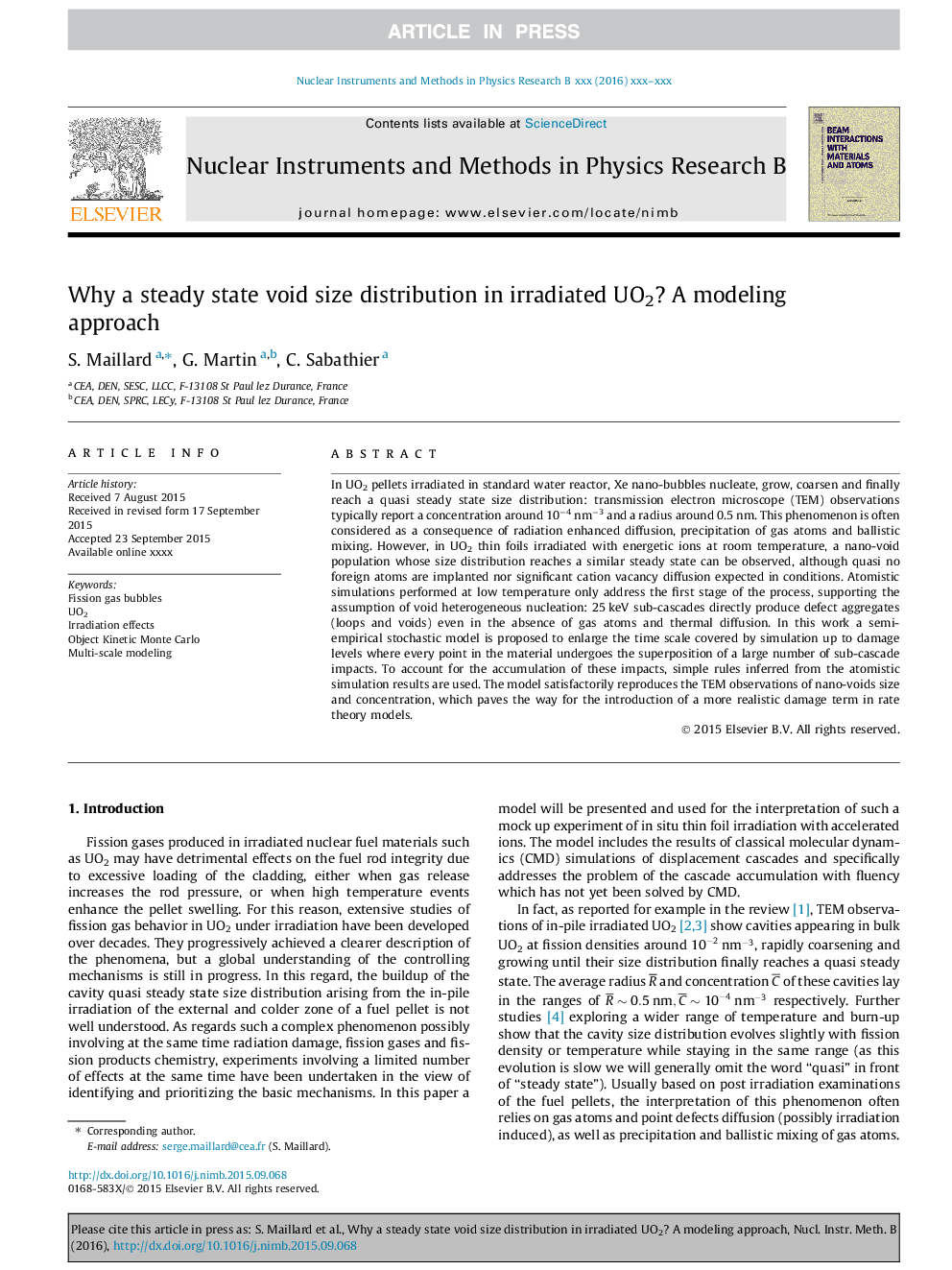| Article ID | Journal | Published Year | Pages | File Type |
|---|---|---|---|---|
| 8039901 | Nuclear Instruments and Methods in Physics Research Section B: Beam Interactions with Materials and Atoms | 2016 | 9 Pages |
Abstract
In UO2 pellets irradiated in standard water reactor, Xe nano-bubbles nucleate, grow, coarsen and finally reach a quasi steady state size distribution: transmission electron microscope (TEM) observations typically report a concentration around 10â4Â nmâ3 and a radius around 0.5Â nm. This phenomenon is often considered as a consequence of radiation enhanced diffusion, precipitation of gas atoms and ballistic mixing. However, in UO2 thin foils irradiated with energetic ions at room temperature, a nano-void population whose size distribution reaches a similar steady state can be observed, although quasi no foreign atoms are implanted nor significant cation vacancy diffusion expected in conditions. Atomistic simulations performed at low temperature only address the first stage of the process, supporting the assumption of void heterogeneous nucleation: 25Â keV sub-cascades directly produce defect aggregates (loops and voids) even in the absence of gas atoms and thermal diffusion. In this work a semi-empirical stochastic model is proposed to enlarge the time scale covered by simulation up to damage levels where every point in the material undergoes the superposition of a large number of sub-cascade impacts. To account for the accumulation of these impacts, simple rules inferred from the atomistic simulation results are used. The model satisfactorily reproduces the TEM observations of nano-voids size and concentration, which paves the way for the introduction of a more realistic damage term in rate theory models.
Related Topics
Physical Sciences and Engineering
Materials Science
Surfaces, Coatings and Films
Authors
S. Maillard, G. Martin, C. Sabathier,
